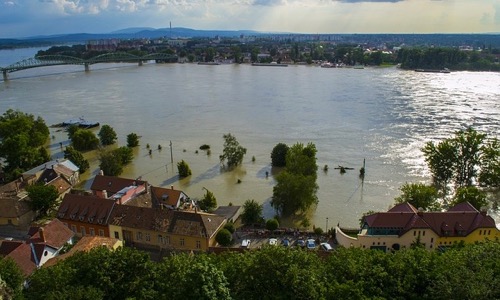Feeling the pressures from climate change as the costs of natural disasters mount, insurance companies look to change old business models to remain profitable.
Some companies are revamping how they handle catastrophes even as climate change remains a hotly contested topic to many Americans.
However, insurers are taking the issue more seriously and adjusting their business models to accommodate for potential losses the industry might face over these storms.
Here are some ways you can tackle issues around climate change in business reporting:
Becoming the Norm
As storms and wildfires get messier to clean up, it’s proved that the bounds of business and sustainability reporting are not mutually exclusive.
FiveThirtyEight, a news organization focused on data analysis, forecasts that slow moving storms like Florence are becoming the norm and wildfires in the U.S. are getting larger.
The total number of acres blazed by wildfires has increased dramatically since 1985, and that’s partly due to a trend in fires getting larger over the years, according to data FiveThirtyEight used from the National Interagency Fire Center.
It’s not just wildfires, the uptick in storms is causing a headache for the insurance industry. According to a study released earlier this year from the largest reinsurance company Munich RE, natural disasters around the world cost insurers over $135 billion. The U.S. led the pack last year with a large share of insurance losses amounting to 50 percent, according to Munich RE.
Competitive Market
The aftermath of Hurricane Harvey proved to Houston residents the importance of insurance as hundreds of thousands were left to cover the damages out of their own pocket, according to the Wall Street Journal.
Insurance companies are also offering flood insurance in areas that weren’t previously considered designated to be in a flood zone.
Now, the private flood insurance market is expanding and with that becoming less competitive, according to the Insurance Journal.
It will be interesting to look at states with the fastest growing private flood insurance market. Florida takes the lead as the biggest market by premium dollars, but several states are catching on as well such as New Mexico, Ohio and Wisconsin.
Speak with climatologist and insurance experts to talk about the growing trend in natural disasters over the past year. Go to your local government to find out what officials are doing to prepare for the next wave of natural disasters. And talk to insurance experts about the future of the market, and what that will mean in terms of profits and policy coverage.
Putting a Price on Evacuations
The bills can quickly rack up for families as well, and most city’s emergency systems lack sufficient funds to help victims left behind as the New York Times Magazine reports.
Slow moving storms are becoming the norm, as FiveThirtyEight claims. How are cities and local communities preparing for the next wave of storms to hit?
Another area left uncovered is how much people spend trying to evacuate storm ridden towns. The New York Times gathered several victims accounts of fleeing, and what most people agree is that it can get very costly very fast.
Follow up with families, especially single parents who can’t afford to leave town during a hurricane because they live paycheck to paycheck. Families can find it hard during these times when storms hit their homes.
In most states, certain types of insurance is not required. For instance, in California, lenders don’t require homeowners to get earthquake insurance, and only 10 percent have it, according the L.A. Times.
Are there new proposals that are bubbling because of the massive storms that hit the U.S. costs this past year within the housing departments to require homeowners to get insurance. What are the perils when homeowners’ insurance does not cover natural catastrophes?











